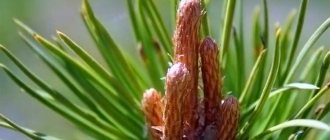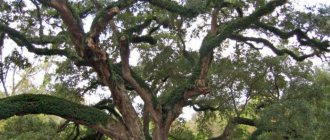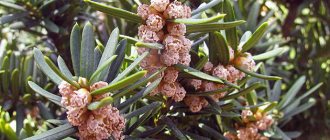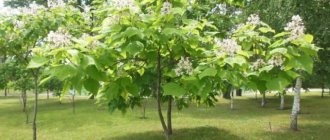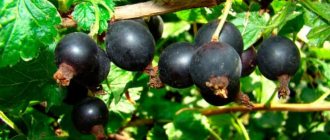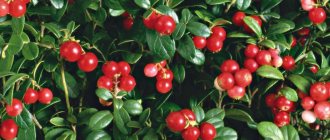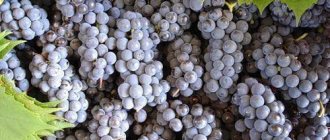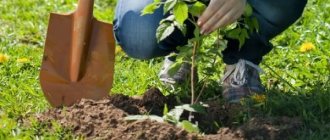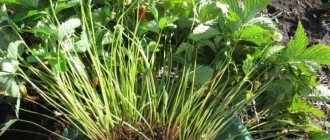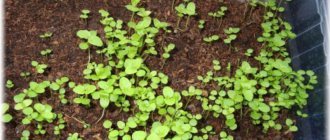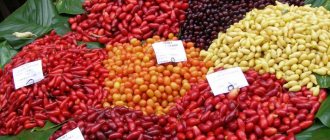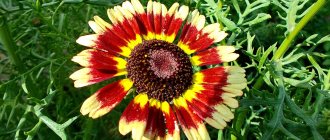Types and varieties of poplar, appearance
Poplar (you will find a photo of the tree in this article) has a total of up to 100 species. The poplar does not live long. Most often, trees stop growing by the age of 50, and their average lifespan is 60-80 years. However, there are specimens whose age reaches 150 years. Since poplar wood is susceptible to various fungal infections, it becomes fragile over time, its branches easily break from gusts of wind and snow.
Poplar is a tall tree, the height of which reaches 50 or 60 m, but on average, their growth is limited to 40 m. The trunk can reach a diameter of a whole meter. The shape of the crowns is different (oval, spherical, pyramidal) depending on the type of poplar. The poplar leaf, the photo of which you see, is simple, petiolate, usually with a pointed tip.
The poplar blooms in early spring along with the swelling and blossoming of the leaves. Poplars are decorated with inflorescences with earrings (male and female). They are pollinated by the wind. The fruits are small boxes with fluffy hairs that cause a lot of trouble. There is a way out of this situation - to plant only male trees.
Among the most common types: sweet poplar, bay poplar, black or sedge, pyramidal, quaking (aspen), white or silver.
Most often, pyramidal poplar is used in urban plantings, the photo of which is in front of you for the shape of its crown, reminiscent of a cypress. The silver poplar has taken root no worse, the photo of which you can compare with the previous species. It got its name from the white edges on the underside of the leaves.
Poplar
Poplar - general view
Poplar pyramidal
Poplar (lat. Populus) is a genus of dioecious (rarely monoecious) deciduous fast-growing trees of the Willow family (Salicaceae).
Spreading
Poplars grow in temperate regions of the northern hemisphere (Holarctic distribution), from the subtropical regions of China, where their center of origin is located, to the boreal zone. In America, they are distributed south to Mexico. Populus ilicifolia is native to East Africa.
In nature, most species grow in river valleys and well-moistened slopes. Aspen (Populus tremula) also inhabits salt licks and former oak and spruce forests. Variegated poplar (Populus heterophylla) can be found on dune sands. In cultivation, poplars grow successfully on any soil.
Poplars require soil richness and aeration, but can withstand waterlogging.
The rapid growth of poplars continues until 40–60 years, after which it slows down. Some species live up to 120–150 years, but usually plants are affected early by various fungal diseases.
Botanical description
Large trees with a height of 40–45 m (up to 60 m) and a trunk diameter of more than 1 meter. The crown is tent-shaped, ovoid, ovoid-pyramidal or pyramidal. The trunk bark is fissured, brownish-gray or dark gray; branches - smooth, gray or olive-gray.
The root system is strong, but mostly superficial, extending far beyond the crown projection.
The leaves are petiolate, alternate, glabrous or pubescent, from lanceolate to broadly ovate, the shape of the leaf depends on the shoot on which it is located and on the position on this shoot, the venation is reticulate.
The plant is dioecious, sometimes monoecious, blooms before the leaves appear or simultaneously with them; The ability to bear fruit occurs at 10–12 years. The flowers are collected in cylindrical, erect or pendulous inflorescences - catkins (spike-shaped racemes), which fall off as the seeds fade or fall out. Each flower in an catkin develops in the axil of a palmately dissected bract; above which there is a so-called disc, saucer-shaped or goblet-shaped in pistillate flowers and lamellar in staminate flowers. The ovary is solitary, with 2–4 sessile lobed stigmas. Stamens from 3 to 60, with a short filament and a bilocular anther. Bisexual flowers are very rarely found.
The fruit is a capsule that opens with 2–4 valves. The seeds are small, oblong or oblong-ovate, black or black-brown, 1–3 mm long, at the base they have a tuft of numerous thin silky hairs (“poplar fluff”). There are more than 1,000 seeds in 1 g.
Economic importance and application
Poplar wood is light, white, soft, well processed and used very widely for technical purposes: as raw material for paper, for the production of artificial silk, for the production of match straws, plywood, simple furniture, lumber, containers, dugout boats and much more. The wood is also used for firewood and low-quality charcoal, since the calorific value of poplar firewood is 1.5 times less than the calorific value of, for example, birch firewood. In the southern, sparsely forested areas, wood is used to construct buildings. Poplar wood was also used for a long time in the construction of railways as sleepers.
Violet dye is obtained from the buds, yellow dye is obtained from the leaves.
Shoots with leaves serve as twig food for livestock.
In winter, the relatively vertical position of the poplar trunk becomes noticeable, which has led to the widespread use of poplar in the landscaping of streets and alleys. Poplar grows quickly and produces soft wood, continuing to grow even if the tree is broken or the top of the tree is sawed off.
Due to the relatively rapid growth and formation of biomass, poplar, along with willow, is used as a regenerative energy source for the production of fuel (ethanol) and heat (combustion). Research has shown that some types of endophytes are capable of accelerating the growth of poplars even more.
In the USA, Canada, EU and China, field trials of genetically modified poplar are being conducted to improve wood quality, pest resistance and the absorption and accumulation of heavy metals for soil remediation.
Different types of poplar, especially black poplar, provide pollen to honey bees during flowering.
During the growing season, a 15-year-old poplar evaporates 82 m³ of water, which makes it possible to use it in agroforestry.
Species of the genus Poplar
The genus includes more than 95 species, which are distributed into 6 sections.
- Section Mexican poplars (Abaso)
Area: Mexico. They are distinguished by the small size of all parts.
- Populus mexicana – Mexican poplar
- Section Deltoid poplars (Aigeiros)
It differs from others by its characteristic delta-shaped leaves on long petioles, like aspens. There are tree forms that have a pyramidal crown, which are grown in the southern regions of Russia - the so-called pyramidal poplars.
- Populus nigra – Black poplar, or Osokor
- Populus deltoides – Deltoid poplar
- Populus fremontii
- Section Leucoid poplars (Leucoides)
Apparently, the most ancient group of poplars. They have the largest buds, earrings and leaves.
- Populus lasiocarpa
- Populus glauca
- Populus heterophylla – Variegated poplar
- Populus wilsonii
- Section Populus
The most common group. Unlike other representatives of the poplar genus, the buds and leaves do not secrete a sticky substance; the petioles are long, which is why the leaves of all aspen trees begin to tremble even in light winds. Contains a species of aspen (Populus tremula) and a group of white poplars
. Close to aspens. A distinctive feature is the palmate-lobed shape of the leaves of the shoots and the dense snow-white pubescence of the underside of these leaves.
- Populus adenopoda
- Populus alba typus – Silver poplar, or white poplar
- Populus gamblei
- Populus grandidentata – Large-toothed poplar
- Populus guzmanantlensis
- Populus monticola
- Populus sieboldii – Siebold poplar
- Populus simaroa
- Populus tremula – Aspen, or Trembling Poplar
- Populus tremuloides – Aspen poplar
- Section Balsam poplars (Tacamahaca)
The buds and leaves are richest in fragrant resin.
- Populus angustifolia
- Populus balsamifera – Balsam poplar
- Populus ciliata
- Populus koreana
- Populus laurifolia – Laurel poplar
- Populus maximowiczii – Poplar Maximowiczii
- Populus simonii – Simon's Poplar
- Populus suaveolens – Sweet poplar
- Populus szechuanica – Szechuan poplar
- Populus trichocarpa
- Populus yunnanensis – Yunan poplar
- Turanga section
From a distance they resemble aspen, but the crown is looser. Unlike all other poplars, their trunk grows not monopodially, but sympodially, like willows.
- Populus euphratica – Turanga euphratica
- Populus ilicifolia
- Populus pruinosa – Blue poplar, or Turanga silifolia
Hybrid species
- Populus ×acuminata
- Populus ×berolinensis – Berlin poplar, a hybrid of laurel poplar and black poplar
- Populus ×canadensis – Canadian poplar, a hybrid of deltoid poplar and black poplar
- Populus ×canescens – Graying poplar, a hybrid of white poplar and aspen
- Populus ×generosa
- Populus ×jackii – a hybrid of deltoid poplar and balsam poplar
- Populus ×moskoviensis – Moscow Poplar, a hybrid of Sweet Poplar and Laurel-leaved Poplar
- Populus ×petrowskiana – Petrovsky Poplar, a hybrid of deltoid poplar and sweet poplar
- Populus ×rasumowskiana – Poplar Razumovsky, a hybrid of Poplar Wobst and Poplar laurelfolia
- Populus ×vernirubens
- Populus ×woobstii – Wobst's Poplar, a hybrid of Laurel-leaved Poplar and Balsam Poplar
Wood
Description of some species of the Poplar genus, their mechanical properties and technical characteristics
| Name | Other names | Botanical name | Distribution (region, country) | Tree dimensions (m) | Density (kg/m³) | Module | Collapsing Strength (Mpa) | Drying shrinkage (%) | Janka hardness | |||||
| height | dia. trunk | rupture (MPa) | elasticity (GPa) | radial | tangential | volumetric | kN | English pounds / lb f | ||||||
| 1. Section Deltoid poplars (Aigeiros) | ||||||||||||||
| 1. Black poplar | Osokor, Pyramid poplar | Populus nigra | Europe, Western Asia (Siberia - up to the Yenisei, Central and Asia Minor, Eastern Kazakhstan, Western China, Iran), North Africa; planted as an ornamental in North America | 25–35 | 1–2 | 385 | 63,7 | 7,21 | 36 | 4 | 9,3 | 12,3 | 2,02 | 460 |
| 2. Alamo | Eastern Cottonwood | Populus deltoides | North America (central and eastern US) | 30–45 (up to 50) | 1.2–2 (up to 2.5) | 450 | 58,6 | 9,45 | 33,9 | 3,9 | 9,2 | 13,9 | 1,91 | 430 |
| 2. Section Populus | ||||||||||||||
| 3. Aspen | Common aspen, Trembling poplar | Populus tremula | Temperate regions of Europe and Asia | 15–20 (up to 35) | 0,6–1 | 450 | 62 | 9,75 | 35 | 4,8 | 8,3 | 13,2 | 1,65 | 380 |
| 4. White poplar typus | Silver poplar | Populus alba | North Africa (Algeria, Morocco, Tunisia, Canary Islands), Europe (except Scandinavia); Minor, Central and East Asia | 30–35 | 0.6–1 (up to 2) | 440 | 65 | 8,9 | – | 3,2 | 5,2 | 8,4 | 1,82 | 410 |
| 5. Coarse poplar | Bigtooth Aspen | Populus grandidentata | Northeast North America | 20–25 | 0,6–0,7 | 435 | 62,8 | 9,86 | 36,6 | 3,3 | 7,9 | 11,8 | 1,87 | 420 |
| 6. Aspen poplar | Quaking Aspen | Populus tremuloides | Canada and northern USA | 20–30 (up to 35) | 0,6–1 | 415 | 57,9 | 8,14 | 29,3 | 3,5 | 6,7 | 11,5 | 1,56 | 350 |
| 3. Section Balsam poplars (Tacamahaca) | ||||||||||||||
| 7. Balsam poplar | – | Populus balsamifera | West coast of North America | 18–21 (until 27) | 0,6–1 | 370 | 46,9 | 7,59 | 27,7 | 3 | 7,1 | 10,5 | 1,33 | 300 |
| 8. Poplar pilosa | Western Balsam Poplar, California Poplar | Populus trichocarpa | Western North America | 30–45 (up to 50) | 1,5–2 | 385 | 58,6 | 8,76 | 31 | 3,6 | 8,6 | 12,4 | 1,56 | 350 |
Gallery
Black poplar, trunk diameter 6.8 m
True black poplars often grow crookedly and have a bizarre bark structure
Black poplar (Populus nigra) – veneer
Black poplar (Populus nigra) – veneer (varnished)
Black poplar (Populus nigra) – end of the board
Black poplar (Populus nigra) – wood fibers (enlarged)
Deltoid poplar - general view
Deltoid poplar – mature tree bark
Deltoid poplar (Populus deltoides) – veneer
Deltoid poplar (Populus deltoides) – veneer (varnished)
Deltoid poplar (Populus deltoides) – end of the board
Deltoid poplar (Populus deltoides) – wood fibers (enlarged)
Aspen (Populus tremula) – trunk
Aspen in summer
Aspen in autumn
Longitudinal and cross cuts showing the structure of aspen wood
Aspen (Populus tremula) – veneer
Aspen (Populus tremula) – veneer (varnished)
White poplar (Populus alba)
White poplar (Populus alba)
White poplar (Populus alba) – mature tree
White poplar (Populus alba) – foliage
White poplar (Populus alba) – foliage; the characteristic colors of the upper and lower sides of the leaf are visible
White poplar (Populus alba). Leaves: lower side - left, upper side - right
White poplar (Populus alba) – trunk with characteristic diamond-shaped markings
White poplar trunk on a cut
White poplar (Populus alba) – veneer
White poplar (Populus alba) – veneer (varnished)
White poplar (Populus alba) – end of the board
White poplar (Populus alba) – wood fibers (enlarged)
Poplar (Populus grandidentata)
Poplar (Populus grandidentata)
Coarse poplar – veneer
Coarse poplar – veneer (varnished)
Coarse poplar (Populus grandidentata) – end of the board
Poplar (Populus grandidentata) – wood fibers (enlarged)
Aspen poplar (Populus tremuloides) is a dense grove. Sierra Nevada, California
Aspen poplar (Populus tremuloides)
Aspen poplar (Populus tremuloides) – veneer
Aspen poplar (Populus tremuloides) – veneer (varnished)
Aspen poplar (Populus tremuloides) – end of the board
Aspen poplar (Populus tremuloides) – wood fibers (enlarged)
Balsam poplar (Populus balsamifera). Reykjavik, Iceland
Balsam poplar – stem with young leaves
Balsam poplar (Populus balsamifera) – veneer
Balsam poplar (Populus balsamifera) – veneer (varnished)
Balsam poplar (Populus balsamifera) – end of the board
Balsam poplar (Populus balsamifera) – wood fibers (enlarged)
Poplar pilosa is a mature tree in a mixed forest. Washington State, USA
Poplar (Populus trichocarpa)
Poplar (Populus trichocarpa) – veneer
Poplar (Populus trichocarpa) – veneer (varnished)
Poplar (Populus trichocarpa) – end of the board
Poplar (Populus trichocarpa) – wood fibers (enlarged)
Mechanical properties and characteristics of wood (for dry wood - moisture content 12%)
| Scientific name – | Populus spp. |
| Density – | 440 kg/m³ 27 lb/ft³ |
| Hard Yanka – | 1.82 kN 410lbf |
| Bending strength – | 65 MPa 9430 lbf/in² |
| Modulus of elasticity in bending – | 8.9 GPa 1291000 lbf/in² |
| Other names – | Poplar |
| Spreading - | North Africa (Algeria, Morocco, Tunisia, Canary Islands), Europe (except Scandinavia); Minor, Central and East Asia |
Related wood species
- Aspen (Populus tremula)
Types of wood with similar properties (density and hardness are the same ±10%)
- Black willow (Salix nigra) • Density – 415 kg/m³ • Hard. Yanka – 1.92 kN
- Okume (Aucomea klaineana) • Density – 430 kg/m³ • Hard. Yanka – 1.79 kN
Where and how does it grow
In nature, poplar is distributed throughout the northern hemisphere - from America to China, throughout Eurasia, and even in eastern Africa. Most often it grows near bodies of water, since moist soil is preferable for it. But this does not apply to all types. Aspen, for example, grows not only in forests, but also on saline lands. And such a species as variegated poplar can be found on the sands of the dunes.
They are in demand in urban landscaping due to their rapid growth.
Fragrant
Sweet poplar grows throughout Eastern Siberia, its homeland is the Far East. The tree grows along floodplains of rivers, on the shores of taiga lakes, sometimes forming poplar groves without admixture of other trees. In Russian cities, poplar alleys landscape railway stations, city alleys, and streets.
The huge tree has a height of up to 20 m, sometimes tree giants up to 25 m in height are found. The branches of the tree are located at an angle of 70° relative to the tree trunk.
These branches form a neat oval-shaped crown, up to 15 m in diameter. Young branches have smooth yellowish or greenish-gray skin, aging with age, the skin on the shoots becomes coarser and becomes covered with cracks.
The older the tree, the more severe the breaks in the burst bark. The tree is not picky about the soils on which it grows; it thrives equally well on black soils and in clay soils. Tolerates frosts down to -40°C.
It is quite demanding in terms of air humidity and reacts negatively to prolonged droughts. The leaves of the fragrant poplar are oval, with a conical pointed tip, the usual leaf size is from 6 to 10 cm in length, 5 cm in width.
The leaves are strong, leathery, the skeletal structure of the leaf is clearly visible in the form of thick veins, the edges are slightly jagged, finely indented. The color of the leaf blade ranges from light olive to dim green; by turning the blade over you can see that its color is light gray, almost silver.
The leaves are firmly attached to the branches, slightly pubescent with a petiole (3-4 cm long). Men's earrings are short, their length is no more than 2 cm, and are reddish in color.
Female inflorescences grow up to 5-7 cm in length; female catkins form a pistil with a tripartite style and an ovoid stigma. The fruit capsules consist of four leaves, elongated, oval.
Plants bloom almost simultaneously with the blossoming of young foliage; full flowering occurs closer to mid-June.
Young plants develop very quickly, gaining height and width of the crown. In Siberia and the Far East, these trees live up to 200 years; poplars growing in cities often live only up to 25-30 years, after which they get sick and dry out.
This type of poplar reproduces well by seeds carried far by the wind or by green cuttings (their rooting rate is up to 90%).
Benefit
Poplars are better than other trees at purifying the air from gas and smoke. These abilities plus their rapid growth make them a favorite in urban landscaping. In addition, poplar wood is in great demand: it is used in the production of artificial silk, paper, containers and furniture, and it is also used in the production of fiberboard, chipboard and laminate.
Paint is made from poplar buds and leaves.
Balsamic
The balsam poplar is native to Canada and North America. The usual tree height is 17-20 m; old fifty-year-old trees often reach a height of 30 m.
The diameter of the spreading poplar crown is 10-12 m; the thick trunk is difficult for two people to grasp, since its diameter can be up to two meters. At the base of the trunk, the bark of the plant is dark, uneven, with bursting, clumsy furrows; higher up the trunk, elastic, smooth skin of a white-gray hue begins.
The branches are covered with leaves 5-14 cm long and 4-7 cm wide. The shape of the leaves is round at the petiole and wedge-shaped, tapering to a sharp tip; the edges of the leaves are covered with finely toothed relief.
The leaf is smooth, with a cool leathery surface and a long dense petiole (2-2.5 cm), the upper part of the leaf is shiny, dark green, the color of the lower plate is gray-green, very light, the skeletal basis of the leaf structure is clearly visible from below.
The buds thrown out in the spring are large, elongated, up to 2 cm high. The buds and newly unfurled young leaves are sticky from a sticky resin coating covering them with a pleasant aroma.
The plant is deciduous, with the onset of autumn changing the color of the crown from gray-green to yellow, shedding its leaf cover and growing it again in the spring. It blooms in May with long, pendulous brown catkins covered with yellow pollen.
Did you know? Forests consisting only of poplar trees are called poplar forests.
The length of women's flowers (earrings) is 13-15 cm, men's earrings are slightly shorter (6 - 9 cm). A flowering catkin has up to four carpels.
It grows in height very quickly, but the wood is often susceptible to disease and is not resistant to pests. The maximum lifespan of a plant is up to 150 years, but usually the tree deteriorates after 80 years; the plant does not freeze even at -45°C.
Application
In medicine
Black poplar buds have an antiseptic and anti-inflammatory effect. Also antipyretic, analgesic and diuretic effect. They have a calming effect on the nervous system and are therefore used as a sedative. Tincture of buds and young leaves is used in gynecology, as well as for the treatment of dermatitis, wounds and ulcers.
Preparations from poplar are taken orally for laryngitis, tonsillitis and bronchitis, neuroses, inflammation of the bladder, intestinal sluggishness, colds, flu, vitamin deficiencies.
Ointments and even baths from poplar buds are prescribed for radiculitis, rheumatism, and for the treatment of skin diseases.
In cosmetology
A decoction of black poplar buds is used for hair loss and dandruff. A special ointment is made for this. For one part of poplar buds there are two parts of vegetable oil. Boil for 30 minutes and then leave for three weeks. Strain into a jar and massage the head. Then your hair will become thicker and stronger.
An ointment made from crushed poplar buds and butter is used to get rid of age spots and freckles.
Harm and contraindications
Pregnant and breastfeeding women, children under 12 years of age, and people with diseases of the gastrointestinal tract should not take infusions and decoctions of poplar buds orally.
In addition to the fact that poplar fluff brings a lot of inconvenience (it litters the streets, flies into houses and open windows), it also causes a strong allergic reaction in people suffering from this seasonal disease.
Canadian
Canadian poplar is a man-made hybrid of Canadian breeders, very similar to deltoid poplar.
A very tall tree (30-40 m) with a wide crown. The width of the crown is formed by spreading powerful branches with rough and gray bark. In spring, the tree is strewn with large, oblong, brown buds covered with gluten.
The leaves of the Canadian poplar are almost triangular (width 7-10 cm, height 7 cm), wide and even at the base, sharply narrowed towards the tip of the leaf, and have a slightly jagged edge. The leaves are held on a short red stalk, the length of this petiole is up to 3 cm.
Canadian poplar blooms with long, loose inflorescences, male red-brown (up to 10 cm) and female light yellow or yellow-green (12-14 cm). Poplar catkins appear even before the leaves bloom, when young buds are swollen. Typically, this poplar variety blooms in April.
After flowering, fruits are formed, 2- or 4-leaf, beige boxes, in which small seeds ripen in the form of a propeller. The ripe capsule bursts and the seeds scatter, carried far by the wind.
Some people are allergic to poplar fluff, which is accompanied by reddened eyes and a runny nose. Seeds can be carried tens of kilometers from the mother plant.
Reproduction, pests and diseases
Most poplar species can be propagated by seeds, cuttings or root suckers. One of the most accessible and simplest methods of propagation is cuttings. Poplar shoots that are cut for this purpose easily take root in both water and soil. The main thing is that their root system likes the soil to be fairly moist. Rooted shoots can be planted in open ground (preferably in autumn).
Seed propagation takes longer and is more difficult. It is important that the seeds used are freshly harvested. Otherwise, they lose their viability. You can store them in a cool place for no more than a year.
Poplar diseases include bacterial canker and necrosis. Trees should be inspected promptly to identify diseases in the early stages. When transporting seedlings, avoid mechanical damage. Sick trees should be cut out and their stumps treated with fuel oil and creosol. Insecticides are used to control poplar pests that lay larvae on their leaves.
The use of poplar in landscape design.
Silver poplar is an unpretentious plant that can easily tolerate infertile soil and severe frosts. Therefore, very often it can be seen in areas with harsh climatic conditions, in large forest parks, where plant care is not applicable. It is very difficult to grow a strong, strong tree from seeds, which forces owners of private territories to use grown seedlings.
They are planted in the spring so that the root system has time to take root and grow stronger during the warm period of the year. In the southern regions, autumn planting is allowed. When planting several plants, it is necessary to maintain a distance of 30-40 centimeters between them. Young seedlings need regular watering and, if necessary, fertilizing with mineral fertilizers. From the first years of life in a new place, plants need regular pruning and crown formation.
Thanks to their lush crown, tall varieties provide pleasant shade and coolness, creating amazing compositions in group plantings. White poplar goes well and looks great next to acacia, thuja, juniper and other conifers. Plants and the creation of dense, decorative, hedges are suitable, the height of which varies from 1.5 to 2.5 meters.
You can organize a poplar fence not only as a wall separating the street from neighboring plots, but also as a framing alley along a garden path. A living wall of poplars can serve as a spectacular backdrop for flower crops planted in flower beds, for a sculpture that will become the highlight of the garden. The disadvantage of a poplar hedge is the bare lower part, so it is advisable to plant two rows of plants in the foreground, covering the tree trunks with low-growing shrubs.
Preparation and storage
For medicinal purposes, poplar buds are harvested in the spring, when they are still hard and do not bloom. They should be dried at a temperature of 30-35 degrees. Dry buds are transferred to a glass jar or paper bag. They can be stored for up to two years.
The leaves are collected from late spring to early summer, when they are still young. Bark from young trees is collected in early spring. But in order not to injure the trees, bark should be collected only from cut branches or broken trees.
White (silver)
Silver poplar grows in Europe and Central Asia. The names also refer to it: snow-white poplar or Bolle poplar. The plant belongs to the Willow family, the average height of the plant reaches 30 m, in rare cases the tree grows up to 40 m high.
The giant has a life expectancy of 65 to 400 years; the centenarian has a short but wide trunk. The thickness of the giant's trunk reaches 2-3 m. The poplar cap is tent-shaped or pyramidal in shape. Branching of the trunk begins 2-3 m from the ground.
The plant has smooth gray bark; in some cases, the shade of the wood covering is gray-green. A very old tree changes its light bark to almost black. Young shoots have a whitish coating, the shape of the shoots is round and sparsely leafy.
Silver has small buds, the height of the finished bud is no more than 0.5 cm. On adult branches the buds are smooth, not covered with a sticky coating. Young branches have sticky buds and sticky young foliage.
The giant has delta-shaped leaves on young shoots, the crown is covered with rounded leaves, the upper part of which is green, the lower part of the leaf is light silver.
When flowering, the branches are covered with elongated inflorescences and earrings. The inflorescences are thick, soft and terry. Male inflorescences are brownish or dark red, female inflorescences are light yellow. The length of women's earrings reaches 12 cm, the length of men's earrings is approximately 7 cm in length.
When the flowering period passes, fruits appear on the silver poplar. This is a brown dry box that opens, revealing seeds. The seeds look like light, weightless cotton wool.
They are small, brown, blade-shaped. In the lower part, the seeds are covered with thin and fluffy cobweb-like hairs. The wind carries them far from the mother tree. This is how the poplar reproduces. Flowering begins in mid-May, and seeds (poplar fluff) ripen in late June or mid-July.
